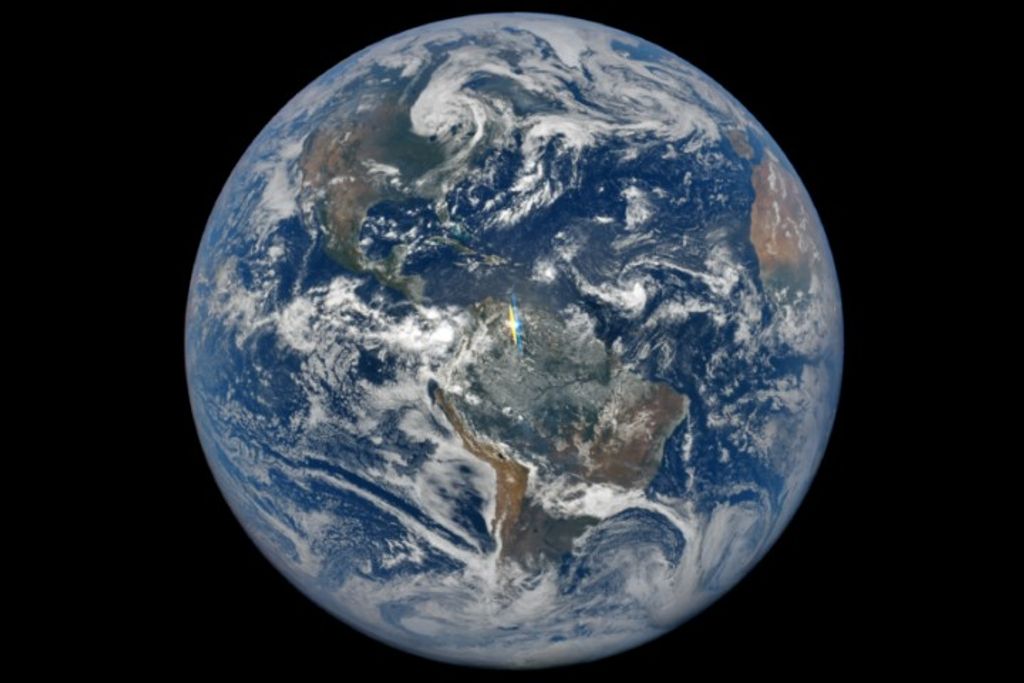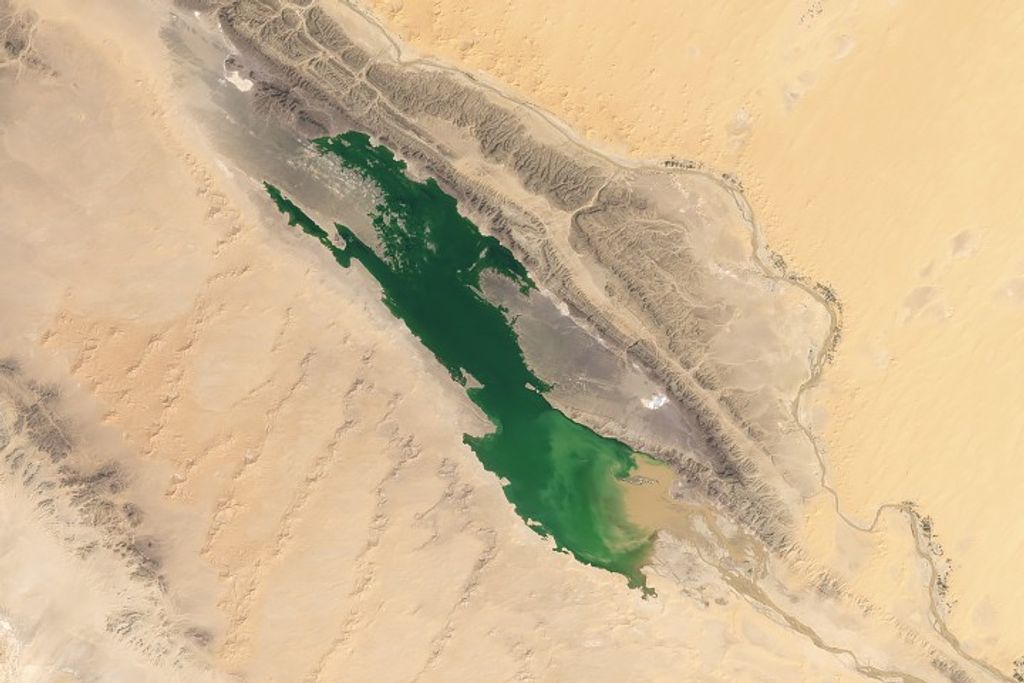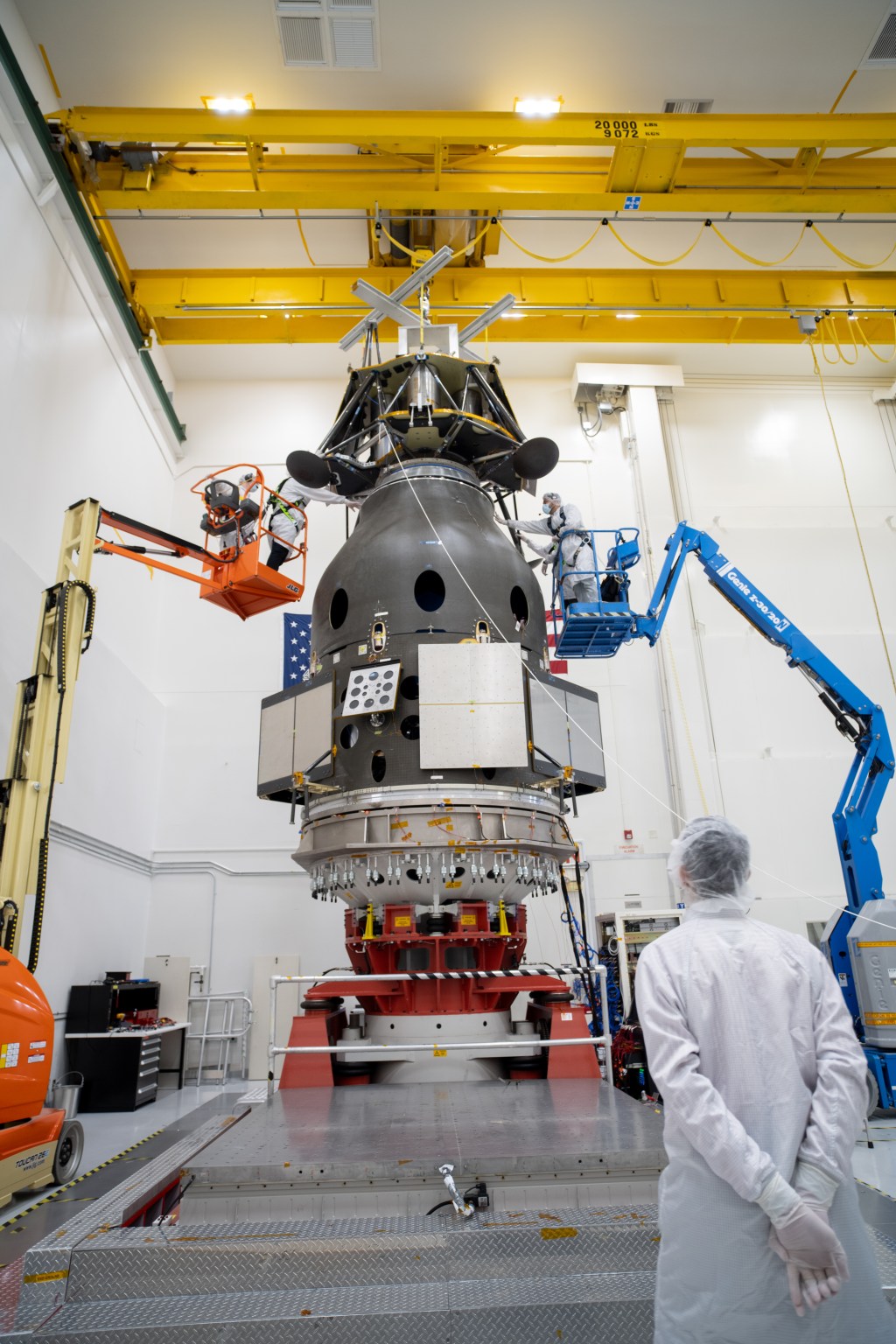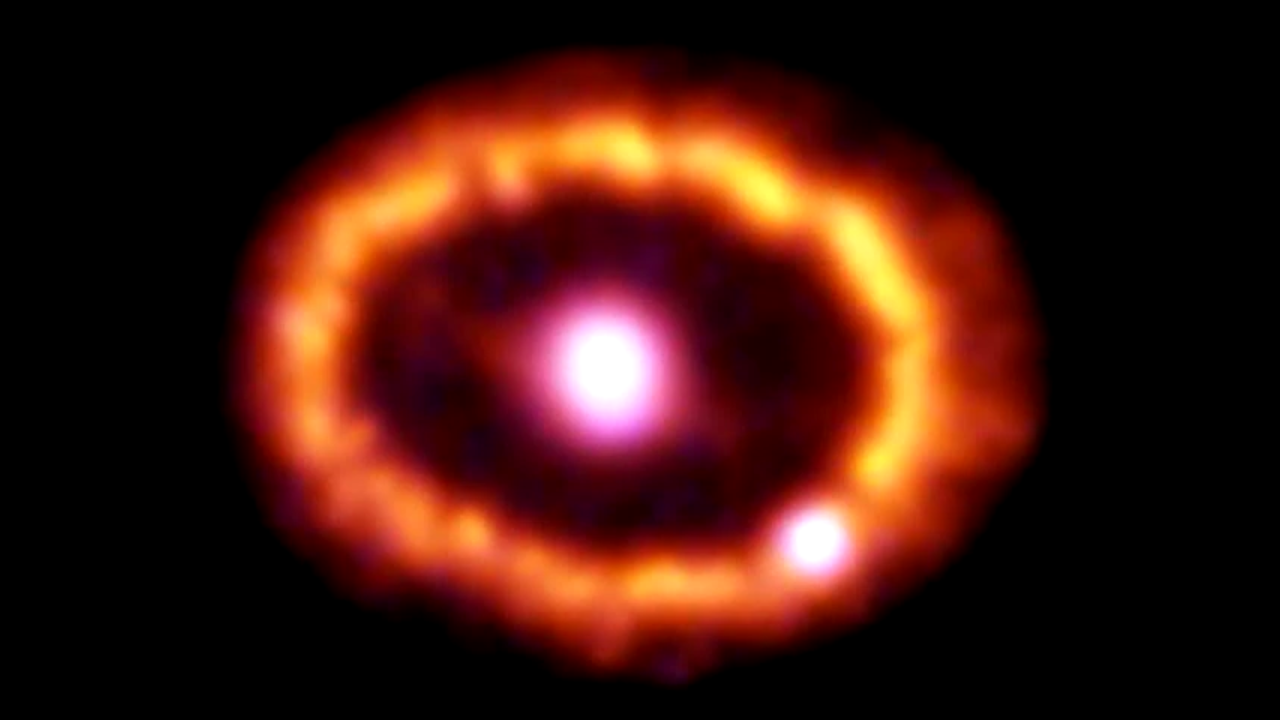1 min read
Hubble Supernova 1987A Scrapbook (1994-2003)
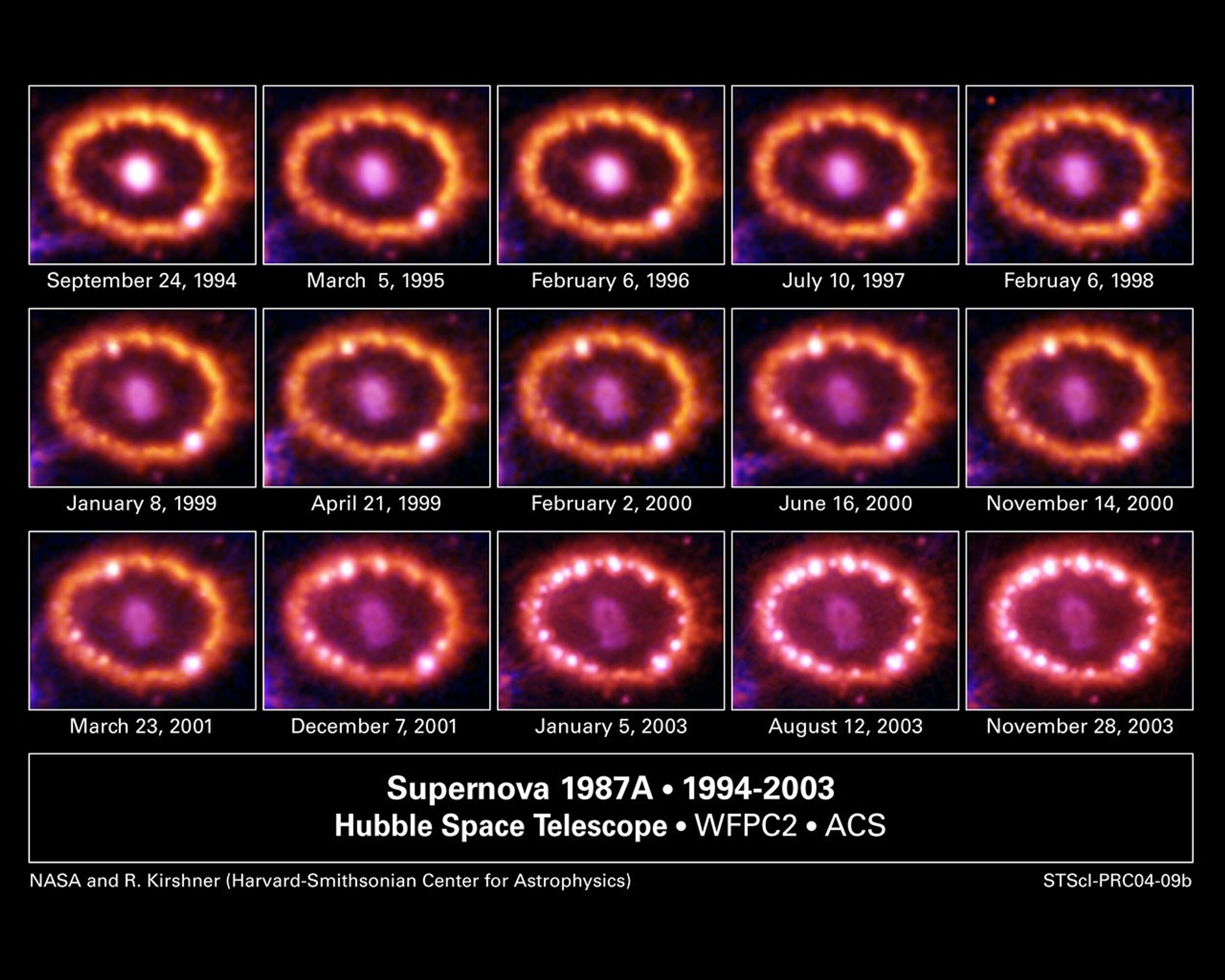
Since its launch in 1990, NASA's Hubble Space Telescope has watched a celestial drama unfold at a stellar demolition site. A shock wave unleashed during a stellar explosion, called Supernova 1987A (SN 1987A), has been racing toward a ring of matter encircling the blast site. Astronomers used Hubble to monitor the ring for signs of the impending bombardment. They detected the first evidence of a collision in 1996 [the bright spot at 11 o'clock in the Feb. 6, 1998 image]. Subsequent observations show dozens more "hot spots" as the blast wave slammed into the ring, compressing and heating the gas, and making it glow.
These images, taken by the Wide Field and Planetary Camera 2 and the Advanced Camera for Surveys, are being released to mark the 17th anniversary of the supernova's discovery. The most recent observations, taken Jan. 5, Aug. 12, and Nov. 28, 2003 by the Advanced Camera for Surveys, show many bright spots along a ring of gas, like pearls on a necklace. The temperature of the hot spots surges from a few thousand degrees to a million degrees Fahrenheit. Curiously, one of the flares on the ring [at 4 o'clock] is just a star that happens to lie along the telescope's line of sight.
Individual hot spots cannot be seen from ground-based telescopes. Only Hubble can resolve them. Since most astronomical events occur over thousands or millions of years, this is a unique opportunity to watch large-scale changes in an object over just a few years. Astronomers also are learning how shock waves really work in the debris of an exploding star.
SN 1987A was the brightest exploding star seen in 400 years when astronomers spotted it on Feb. 23, 1987. The violent death of a star 20 times more massive than the Sun, called a supernova, created this stellar drama. The star actually exploded about 160,000 years ago, but it has taken that long for its light to reach Earth. The supernova resides in the Large Magellanic Cloud, a nearby small galaxy that is a satellite of our Milky Way galaxy.
The ring, about a light-year across, already existed when the star exploded. Astronomers believe the star shed the ring about 20,000 years before the supernova blast. The ring is glowing in the early Hubble photos because it is being heated by ultraviolet radiation from the exploding star. As the gas cooled, the ring began to fade, only to be illuminated again by the shock wave, which is delivering a sledgehammer blow to the ring. This is a rare opportunity for astronomers to see exactly how a supernova explosion is transformed into a supernova remnant, the glowing, expanding gaseous remains of a supernova blast.
The elongated and expanding object in the middle of the ring is debris from the supernova blast. The elliptical shape of the supernova debris provides clues to the violent events that took place deep within the exploding star. The glowing debris is being heated by radioactive elements, principally titanium 44, that were created in the supernova explosion. The debris will continue to glow for many decades.
In a few years, the entire ring will be ablaze as it absorbs the full force of the crash. The glowing ring is expected to become bright enough to illuminate the star's surroundings, thus providing astronomers with new information on how the star ejected material before the explosion.
About the Object
- R.A. PositionR.A. PositionRight ascension – analogous to longitude – is one component of an object's position.05h 35m 28.25s
- Dec. PositionDec. PositionDeclination – analogous to latitude – is one component of an object's position.-69° 16' 13.0"
- ConstellationConstellationOne of 88 recognized regions of the celestial sphere in which the object appears.Dorado
- DistanceDistanceThe physical distance from Earth to the astronomical object. Distances within our solar system are usually measured in Astronomical Units (AU). Distances between stars are usually measured in light-years. Interstellar distances can also be measured in parsecs.Approximately 160,000 light-years away (49 kiloparsecs)
- DimensionsDimensionsThe physical size of the object or the apparent angle it subtends on the sky.Each single image of the SN1987A ring is roughly 2.6 arcseconds wide. At the distance of the LMC, this represents 2 light-years (0.6 parsecs).
About the Data
- InstrumentInstrumentThe science instrument used to produce the data.HST>WFPC2 and HST>ACS
- Exposure DatesExposure DatesThe date(s) that the telescope made its observations and the total exposure time.1994 - 2003
- Object NameObject NameA name or catalog number that astronomers use to identify an astronomical object.SN1987A
- Object DescriptionObject DescriptionThe type of astronomical object.Supernova in the Large Magellanic Cloud (LMC)
- Release DateFebruary 19, 2004
- Science ReleaseSupernova Shock Wave Is Producing a Spectacular New Light Show
- Credit

Related Images & Videos

Supersonic Shock Wave Heats Gas Ring Around Supernova 1987A (SN1987A)
Seventeen years ago, astronomers spotted the brightest stellar explosion ever seen since the one observed by Johannes Kepler 400 years ago. Called SN 1987A, the titanic supernova explosion blazed with the power of 100,000,000 suns for several months following its discovery on...
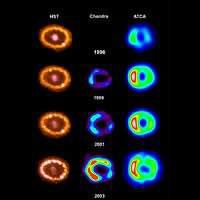
Observations of SN1987A at Different Wavelengths
Hubble's optical light observations of Supernova 1987A become even more valuable when they are combined with observations from telescopes that can measure other kinds of radiation from the exploding star. The image shows the evolving images of hot spots from the Hubble Telescope...
Share
Details
Claire Andreoli
NASA’s Goddard Space Flight Center
Greenbelt, Maryland
claire.andreoli@nasa.gov








